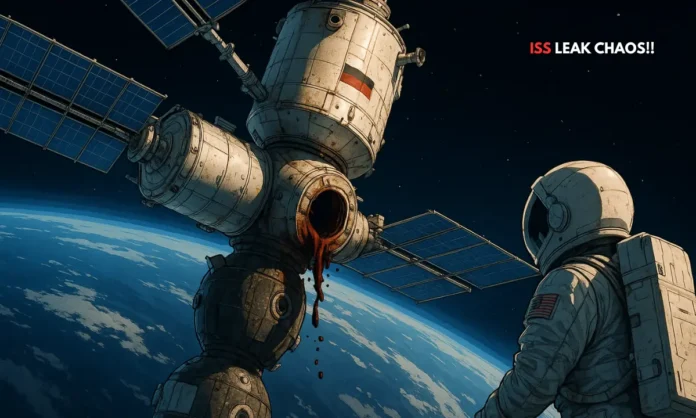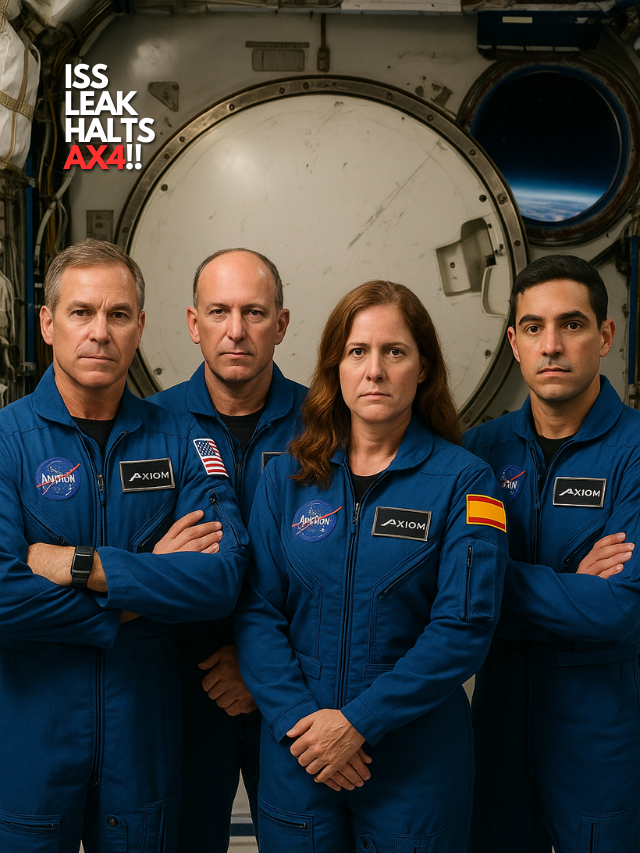SUMMARY
- A critical air leak in the Russian segment of the ISS has indefinitely delayed Axiom Mission 4.
- The Ax-4 crew includes private astronauts from India, Hungary, and Poland—all first-time nationals aboard the ISS.
- With the 2030 retirement looming, the ISS faces growing questions about its aging infrastructure and future viability.
A Fragile Outpost in Orbit: Cracks in a Global Space Icon
In a week that was meant to mark historic international firsts in space travel, a seemingly minor technical issue has cast a long shadow. A leak on the Russian Zvezda module of the International Space Station (ISS), detected just days before the scheduled launch of Axiom Mission 4 (Ax-4), has forced NASA to postpone the mission indefinitely. Although NASA has reassured that the current ISS crew is safe, the episode raises deeper concerns—not just about the reliability of the 25-year-old orbital laboratory, but also about the risks private space missions now face as they integrate with legacy space infrastructure.
At the heart of the matter is the Zvezda service module, one of the oldest components on the ISS, which showed a “new pressure signature” indicating a loss of air. The issue is not new—minor leaks have plagued the Russian segment over the past few years. However, this latest detection comes at a high cost: the indefinite grounding of a high-profile, multi-national commercial mission with political, scientific, and economic implications.
#Update #IndianInSpace
— Chethan Kumar (@Chethan_Dash) June 16, 2025
Nasa, which along with Axiom Space delayed the launch of #Ax4 to the International Space Station (ISS) owing to leaks in a Russian service module of the ISS earlier this week, has categorised the same as “small”. 1/n pic.twitter.com/EhKeqA0j2l
From Dream to Delay: How the ISS Leak Disrupted Axiom Mission 4
- The Ax-4 mission was delayed first by weather and Falcon 9 issues before the ISS leak sealed its fate.
- The crew includes India’s Shubhanshu Shukla, Hungary’s Tibor Kapu, and Poland’s Slawosz Uznánski-Wiśniewski.
- Former NASA astronaut Peggy Whitson leads the mission, which was to conduct 60 microgravity experiments.
Axiom Mission 4 was poised to break new ground—quite literally—for several nations. India, Hungary, and Poland were preparing to send their first private astronauts to the ISS, symbolizing a new era of international human spaceflight beyond government programs. The two-week mission was packed with over 60 science experiments from global institutions, many tailored specifically for microgravity environments.
However, Axiom’s ambition now faces the constraints of an aging orbital platform. NASA, working with Russian agency Roscosmos, has opted to keep the ISS closed to new visitors until the situation is fully assessed. Although the Zvezda module is reportedly “holding pressure” after temporary patching, the root cause of the leak remains under investigation.
Aging Giants: What the ISS Crisis Tells Us About the Future of Space Habitats
- ISS will retire by 2030; recent leak incidents expose mounting structural vulnerabilities.
- Axiom Space’s long-term plan includes building a modular commercial space station to replace the ISS.
- Concerns are growing about extending ISS operations beyond 2030 amid safety and financial uncertainty.
This isn’t the first time the ISS has leaked—and it likely won’t be the last. In February 2024, an unresolved leak in another Russian module prompted a months-long debate between NASA and Roscosmos over severity and response protocols. These recurrent incidents have amplified scrutiny on whether the ISS can safely operate until 2030, its planned retirement date.
For Axiom Space, this is both a setback and a case study. Their long-term plan hinges on attaching modules to the ISS starting in 2026, eventually replacing the station with a commercial habitat. But if such a cornerstone of global space collaboration proves structurally unreliable, the race to create independent, commercially owned space stations may accelerate.
The situation also exposes geopolitical complexity: Roscosmos owns the affected ISS module and remains a key stakeholder, but Western agencies like NASA and Axiom Space bear the reputational and operational risk when failures occur.
The Thin Line Between Legacy and Liability
The Ax-4 delay isn’t merely a schedule shift—it’s a symptom of a much deeper strain in modern space operations. As legacy space infrastructure ages, new-age private missions find themselves vulnerable to issues outside their control. The ISS is a marvel of human cooperation, engineering, and ambition—but its golden age is fading.
With the ISS facing retirement and Earth’s geopolitical alliances in flux, the need for next-gen space stations—resilient, modular, and privately built—has never been more urgent. Ax-4 may still launch, but this episode may be remembered as a pivotal moment when the balance shifted from international legacy systems to commercial frontiers.



